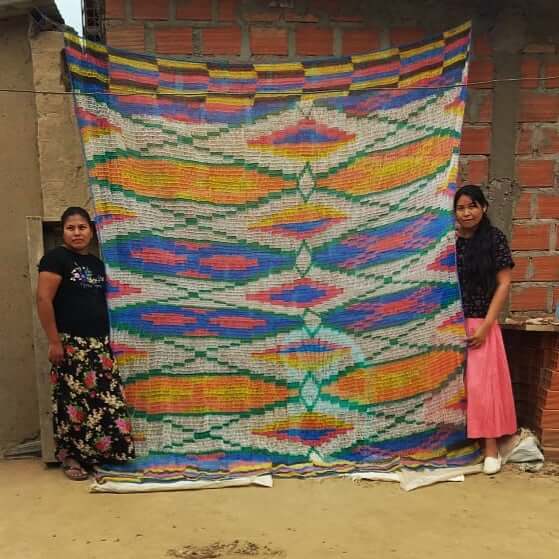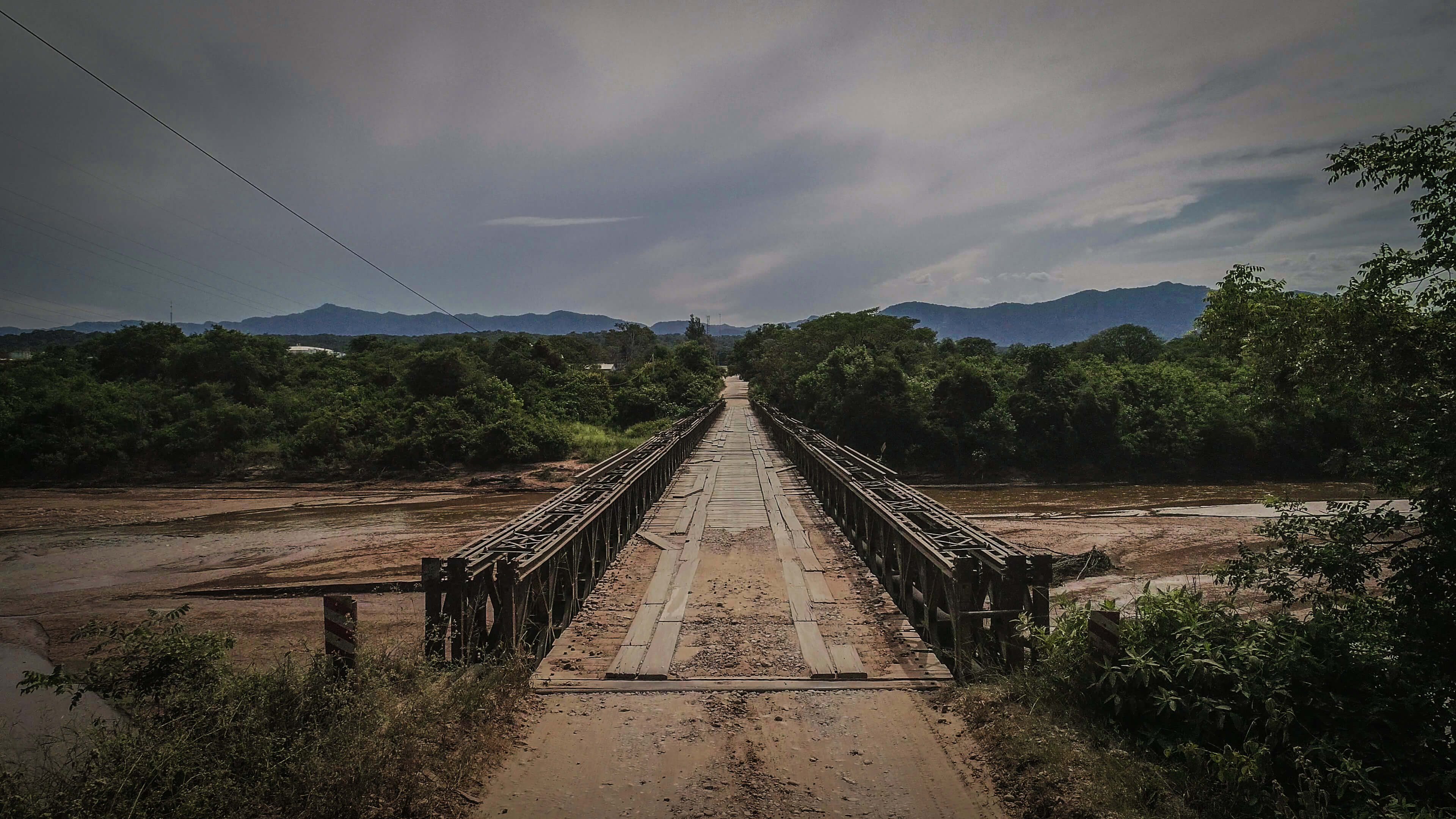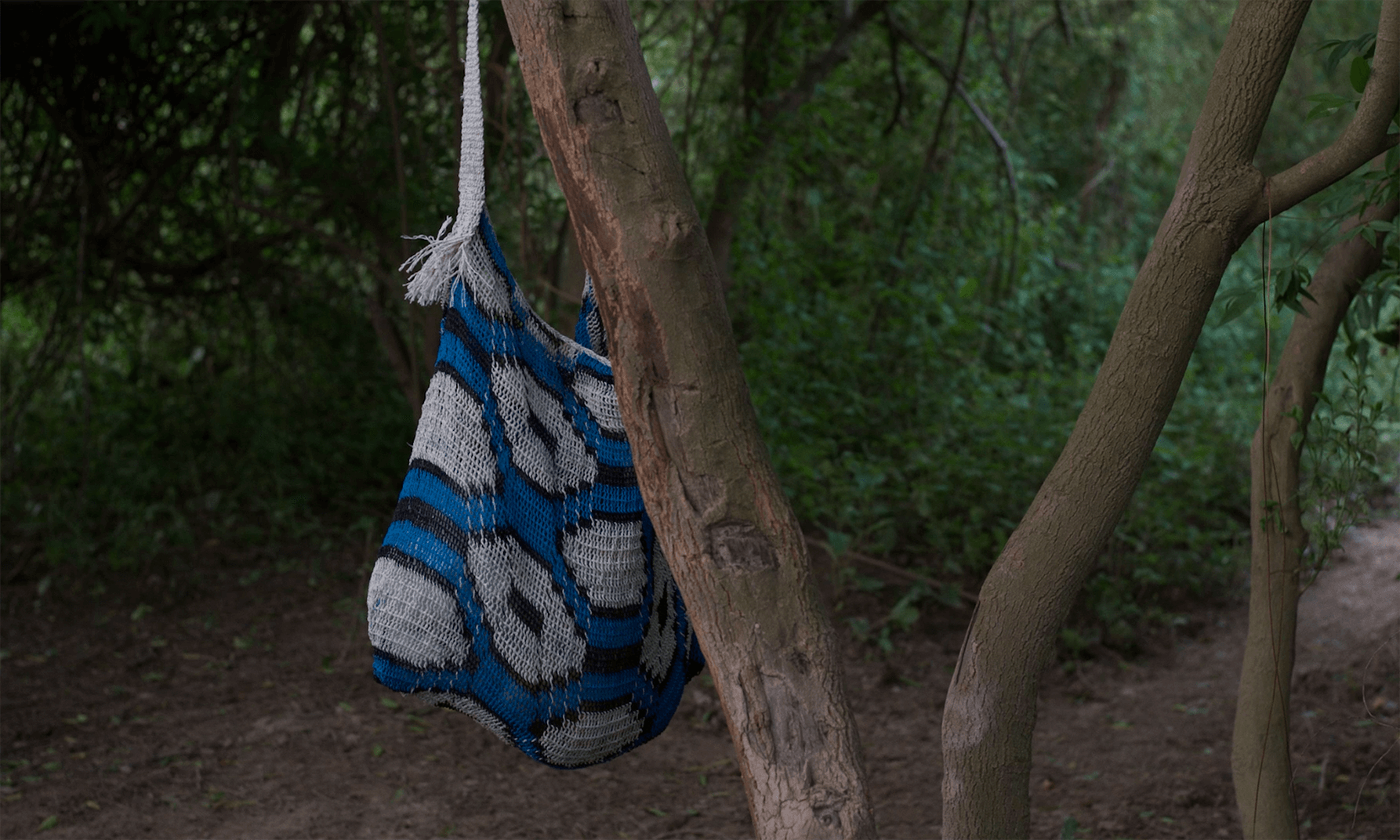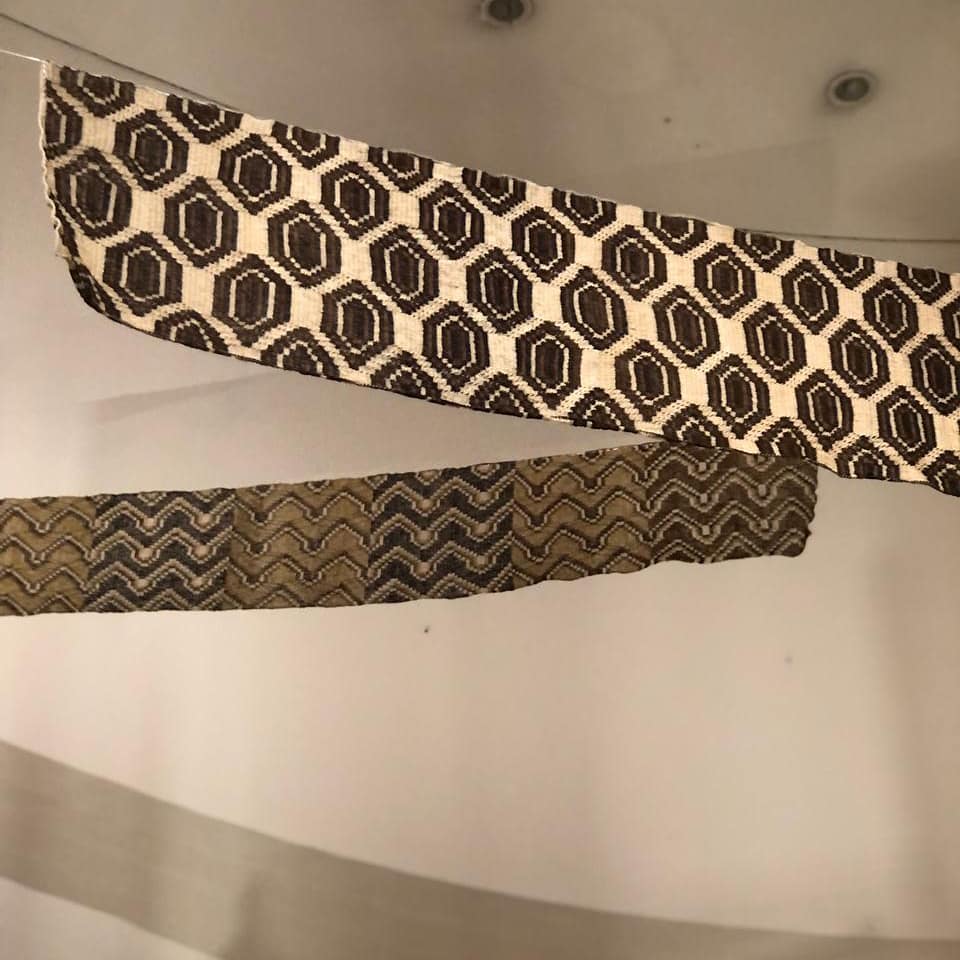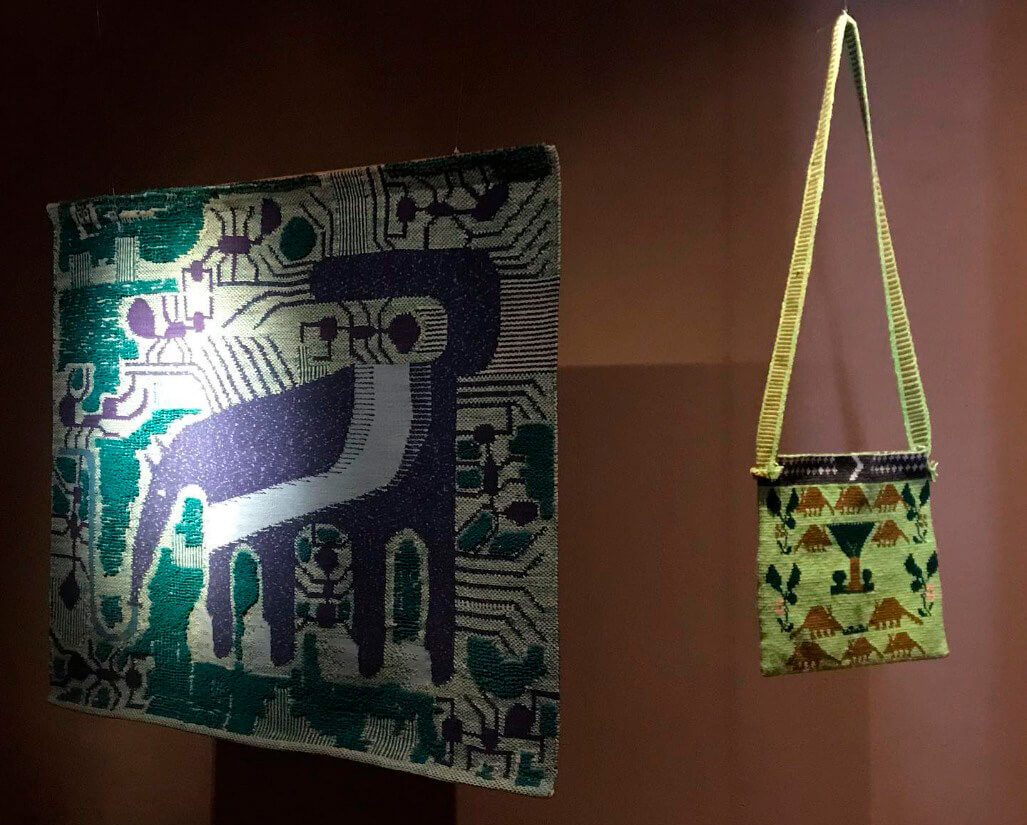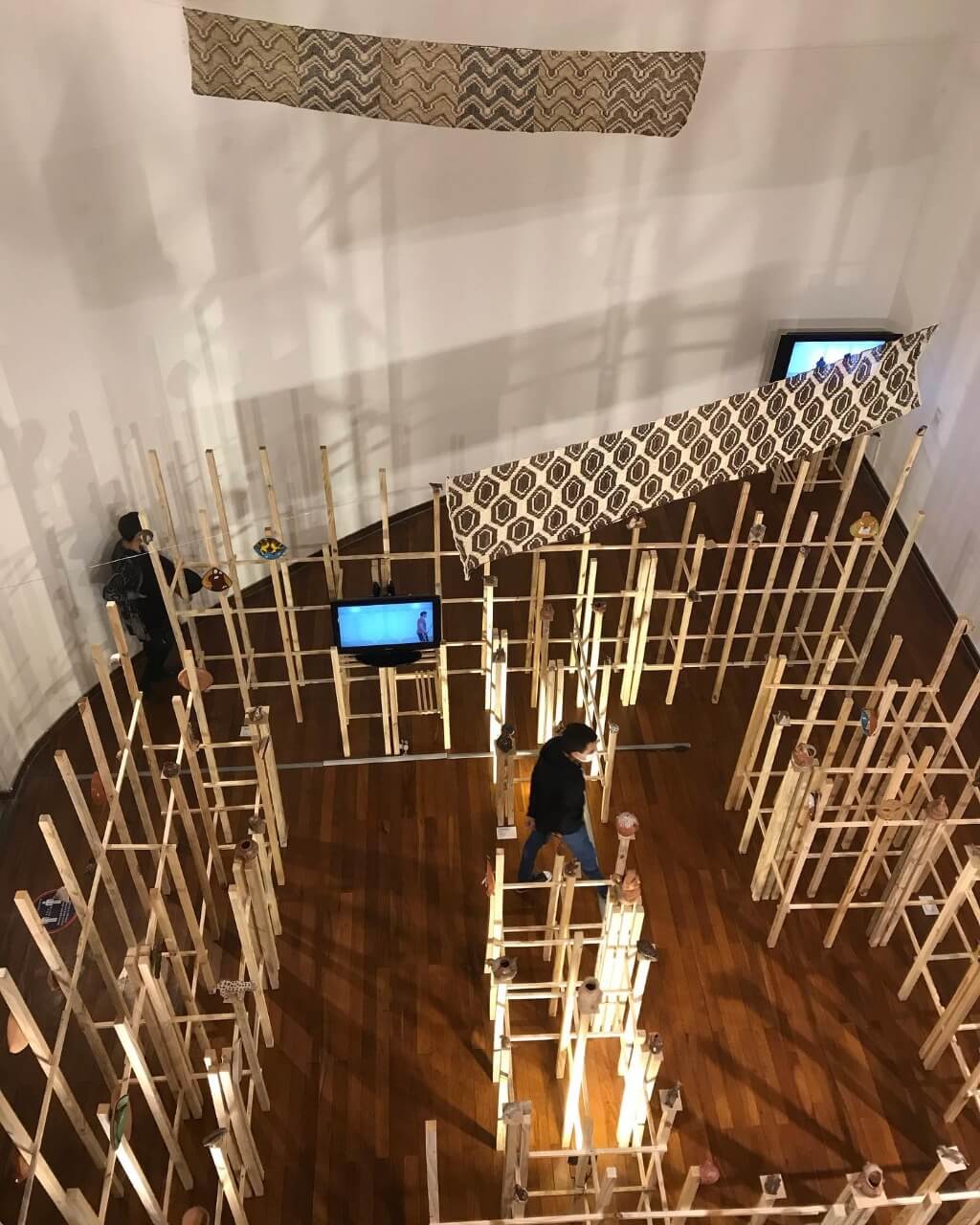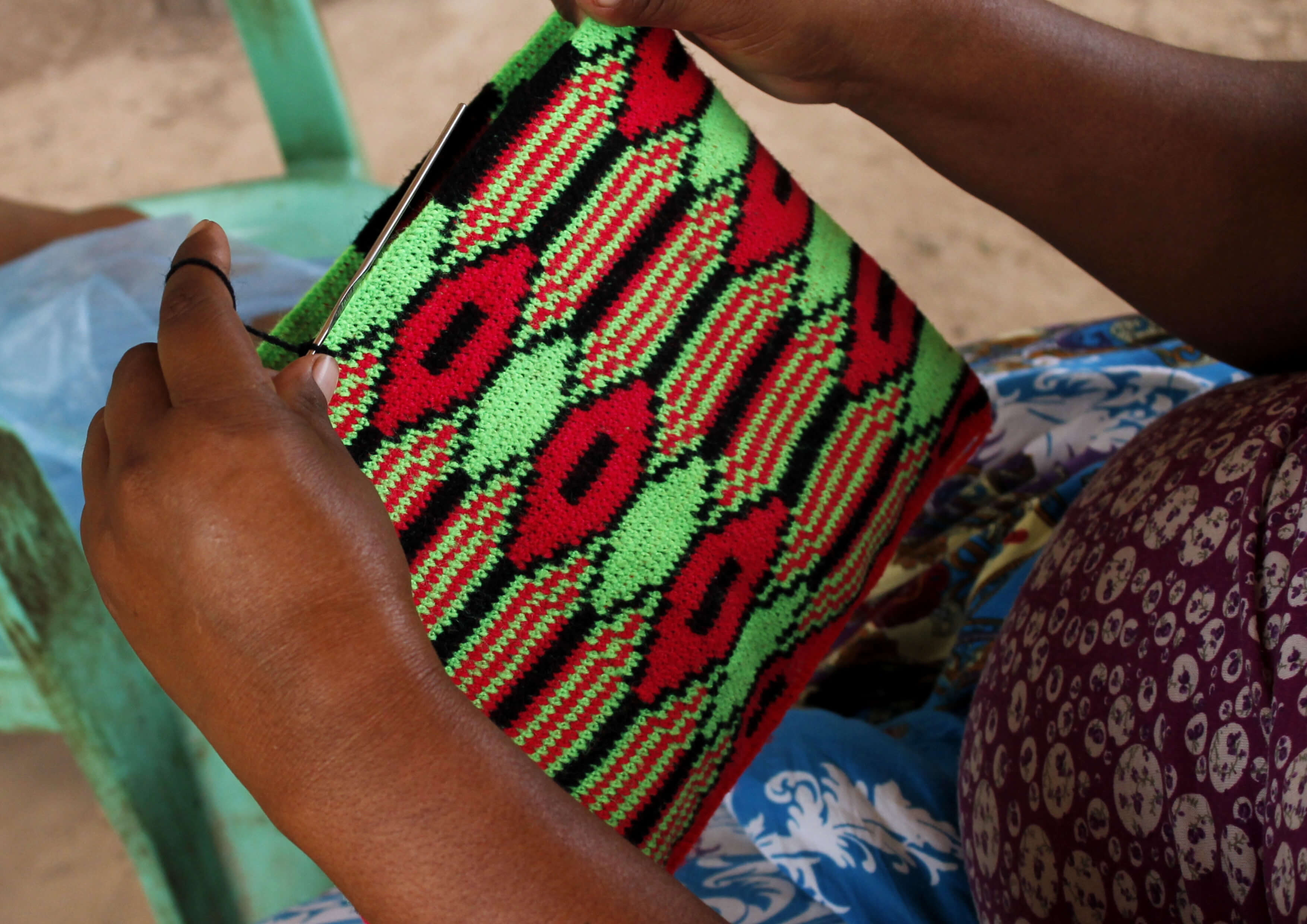ART AND CRAFTS WITHOUT LIMITS IN “THE LISTENING AND THE WINDS”. SALTA MUSEUM OF FINE ARTS.
The Bienalsur has just started its journey in its 2021 edition with a complex, committed exhibition, which is presented in a hierarchical space: the Lola Mora Museum of Fine Arts, in Salta. In four of its rooms, the curators Inka Gressel (Germany) and Andrea Fernández (Argentina) unfold a plot that brings together different worldviews and views always with the leading role of the native peoples settled in the Chaco region of Salta, a space located between the rivers Bermejo and Pilcomayo, which was recently incorporated into the Argentine government authority around 1924, long after the so-called “conquest”.
Fabrics and ceramics created by indigenous hands dialogue with artists, anthropologists, filmmakers and other cultural managers and social activists in a project that seeks to give visibility to an unresolved problem. The exploitation of the so-called natural "resources" ignores the presence of the native populations and in its advance over the mountains, it takes over the ancestral ways of life, expelling these communities from their original settlements.
The proposal began with the curatorial work of the visual artist from Tucumán Andrea Fernández and soon received the support of Inka Gressel, co-director of the ifa-Galerie IFA in Berlin, where it was presented for the first time at the end of 2020. Designed to fulfill a long itinerary, on July 8 it was inaugurated at the Museum of Fine Arts in Salta, and its exhibition in other geographies is already scheduled, expanding the call, as if it were a living fabric that is transformed in the passage of time.
Interculturality
“Only in the city of Tartagal, today communities of eight indigenous peoples coexist who continue to speak their native languages. Migrants and a large mestizo population also live there, forming a multilingual and intercultural society” -explain the curators.
Live without losing the value of ancestral knowledge, and without losing certain historically important practices for these peoples; the usual dilemma. It is told by the weavers of the Suwanhas group -ants in the Wichí language-, from the Alto La Sierra area, in Santa Victoria Este:
"At first we were few
there weren't many women
because little was sold
and it was not valued
we always left the fabric for the last
for ourselves
but selling it didn't work
they never gave you what you asked for
and the time that is used to weave is a lot”. (1)
Among the aboriginal groups gathered, Thañi / comes from the mountain stands out, a meeting of about one hundred and fifty women weavers from three areas or settlements -La Curvita Nueva, Zona La Puntana and Choway (Alto La Sierra)-, located in the north of the Salta province, in an area more or less close to the Pilcomayo river on the border with Paraguay and Bolivia. (2) Their fabrics are made with the chaguar fiber, applying ancestral techniques and designs. In their typical artisan expressions they make yicas, bags, fishing nets, hammocks and other textiles to store or carry things. In the exhibition we see his typical designs and others that are new - the result of an exchange with the visual artist from Salta, Guido Yannitto, ancestral abstractions captured with contemporary images -projected on large-volume fabrics, thus transforming his ancestral mandate. In addition, in the face of the loss of natural resources, the proposal also calls for the recycling of plastics, reinventing the weavers in an initiative that does not stop in the face of the debate on traditional crafts or contemporary art. Andrea Fernández, co-curator of the exhibition, explains: “The abstractions are the old ones, the figurative images are the new ones, the scale is new, the intercultural dialogue from art is new, since the intercultural link used to be limited to undertakings of the social economy”.
The exhibition also presents the fruits of a previous experience, the tapestries of Carlos “Pajita” García Bes (1914 - 1978), who explored the syncretism between pre-Columbian and European cultures with aboriginal and Creole artisans from Salta, and was also director of the Provincial Market of Crafts and one of the creators of the Provincial School of Fine Arts "Tomás Cabrera" of Salta. Ten of his tapestries are now part of the collection of the Museum of Fine Arts in Salta. (3)
In addition, the collective of women potters from the Chané people Orembiapo Maepora (Our work is beautiful), artisans from the Tutiatí community (Campo Durán), the place where the wooden masks used in a celebration are carved, participates in Listening and the Winds. community of agrarian origin, which survives linked for a long time to the folkloric carnival. This group was accompanied by the artist and teacher Florencia Califano from San Salvador de Jujuy. They make ceramic representations of the animals they live with today, those that have already disappeared from their habitats and also those they imagine. Clay, water and fire, and Florencia Califano assures it, a fourth element, memory: "There is no ceramic without a past, without a cultural load," she says. Another manifestation of the dialogue between cultures and diverse realities; the urban artist and the “maeporas”, aboriginal potters who received the trade from a community grandmother, and who today recreate it in front of new horizons.
In another room, Daniela Seggiaro, screenwriter and film director from Salta, created an installation whose name "The fortress" refers to her film Husek and to a story that goes back to the so-called Chaco War. There she exposes fragments of said film, words woven into yicas, and woven fabrics translated into digital spellings in a reflection on the intercultural links that color the present.
Deepening the views on the native peoples of the region, the San Juan director Brayan Sticks presents a documentary essay entitled "Territory", with the participation of a group of young students, who had recreated in the main square of Tartagal, in 2019 and for the anniversary of the arrival of Christopher Columbus, a battle fought a century ago between the Argentine Army and indigenous warriors led by the Taikolic cacique. As in those times, the struggle continues, "that the language of each indigenous be respected" - they demand.
The exhibition is completed with the audiovisual work of the anthropologist Carlos Masotta; the work entitled “Pin Pin Ñanderekó” shows the preparation of the dance and the traditional music of the carnival in the Guaraní community of Cherenta, in Tartagal. There are the voices of those who feel that "civilization is a duel, it is losing our rights..."
Art, crafts, identity, territory, commitment, visibility, creation, memory ... Listening and the winds awaken emotions and ask questions at the launch of this Bienalsur that surprises from its first step on a tour that is projected through 23 countries, with more of four hundred invited artists, as its architects, Anibal Jozami, rector of the Tres de Febrero University (Untref) and Diana Wechsler, general director and artistic director of an event that defies its own limits in each edition, enthusiastically explain.
In the voice of the Argentine curator, contemporary art and social commitment
HILARIO: Doesn't the replacement of the utilitarian work by one to be contemplated, and of the natural raw material by a recycled one, put at risk the worldview of the work itself, and of the final product among the weavers themselves?
ANDREA FERNÁNDEZ: When I began to get to know the communities on the banks of the Pilcomayo River, in 2015, one of the things that most caught my attention was that the women wore yicas on their bodies (a way of naming a type of backpacks they wear almost all the people who live in the Salta Chaco) made of acrylic wool of vibrant colors. I asked to buy one of those pieces at that time, and they told me that those were not sold, that they made them to use and to give as gifts. Already at that time, and I could not tell you how long before, many women reserved chaguar textiles (the wild plant of the native forest that they historically used to carry out their utilitarian textile works) only for sale. For everyday objects, they currently use wool for the yicas to store and carry personal things, and plastic for fishing nets and bags for collecting honey and other foods from the mountain. I believe that regardless of the materials used, ancestral images are still present, and I understand this as an act of resistance and defense of collective memory. That the chaguar is not abundant and other materials are used has to do with all the changes that occurred in these territories due to the clearing, the presence of cows in the native forest, and the lack of public policies with an intercultural perspective. I believe that bringing this knowledge to a space of visibility that can enable a new construction of value, that these plots are not only in design stores, handicrafts or at fairs is an act of respect and admiration for the images of the native people with whom we coexist. It is not about making the weavers value their own culture, but rather that we can know and value it who we are part of other cultures, which are those that occupy the rooms of art spaces, among other things.
H: The productions for the exhibition were collective; This modality is not frequent among traditional indigenous crafts. How to explain that this initiative now makes sense? It is that, on other occasions, the interference of the white world sought to serialize and segment the production processes in the plan of optimizing the work from a strange look at the original culture.
AF: The actions that I propose as a curator (and as an artist) seek to generate dialogues and collective works, they allow me and other people who are not part of indigenous peoples, to get to know other cultures and rethink ourselves. I consider that it is essential to know the pre-existing peoples to respect them, to support their rights from various roles, within which there is also access as spectators and mainly as authors / creators in what we call Culture and Art (with capital letters). We have a lot to learn from native peoples and that process is necessarily a process of decolonization. I do not have European origins nor in my family there is that I know of any memory of having gotten off the boats, nor can I recognize myself as an indigenous person because I am a “mestizo”, I am part of all those people who have their origins erased, denied. In some parts of Argentina I am black and in others I am white, and that also makes me feel and ask a lot of questions.
I approached indigenous weavers and potters from the current north of Salta, being part of “innovation and value added” projects, projects of institutions that tried to support women so that they can better sell their artisan works. This is how I also approached the handicraft market, and one of the first things I noticed is that handicrafts are not usually sold with the name of the person who made them, nor is it usually named the communities of which their authors are part, although always there are exceptions, of course.
Our proposal to the weavers of the Wichí people, who are part of the “Thañí / Viene del monte” collective, was to do collective work. It is true that it is not customary to do it this way, but that each woman tends to do her own weaving while she “steals” other tasks that she has in her home, especially related to caring for her daughter. her. Before this collective of artisans was formed, which also functions as a collective brand, in former fiscal lots 55 and 14 women sold alone (with the help of their husbands or families), they sold to whoever they could, to whoever was there. : the grocer, someone who came to the territory looking to buy handicrafts wholesale, references of different NGOs that develop projects to support communities in the sale of handicrafts for several decades. As of 2017, this organization that is Thañi (the Wichí word for the mountain) allows them to “go out” to sell, and to sell together; One goes out to participate in a fair, for example, but she takes the jobs of a hundred; They began to hold meetings to make decisions, they had new challenges to organize and trust other women who are from other families and other communities, and the institutions that accompany them. I think that our proposal to do collective work that they used to do (on a different scale) alone, is part of these current, new challenges. I do not consider that we are imposing as "targets" that they do things differently, but that we are working with them to think about what we can do together today.
Notes:
1. Fragment of the record of Daniel Zelko (2021), Buenos Aires artist who from his project "Reunion" leads to writing oral messages launched by other voices. In the exhibition, together with the elder cacique wichí Caístulo, in a cooperative creation they gave poetic form to the messages sent by the mountain -Andrea Fernández explains: and that Caíustulo lends his body to give us the possibility of listening to them.
2. The group of artisans has a high quality website. It deserves that you visit it - and we imagine you will want to buy some of the works offered for sale-, we bring you the link: www.vienedelmonte.com.ar
3. Pajita García Bes, born in Salta, trained in Buenos Aires and in 1942 returned to his homeland, where he was an important cultural manager, in addition to working from the artistic point of view with the pre-Columbian universe and the aboriginal populations, among which participated in community ceremonies with ancestral roots. His tapestries were an aesthetic reference for many local artists.
